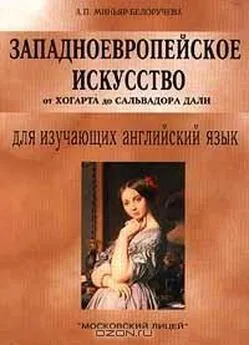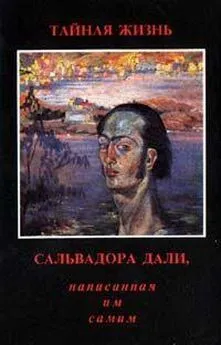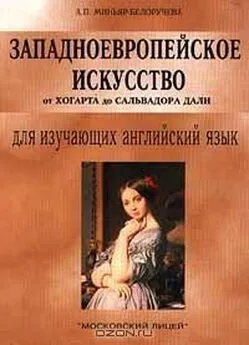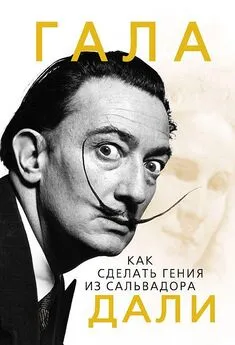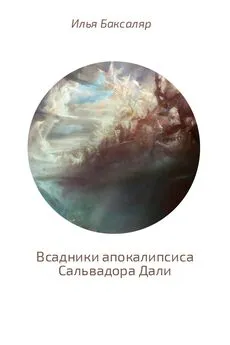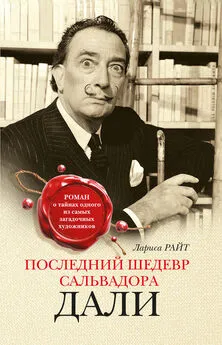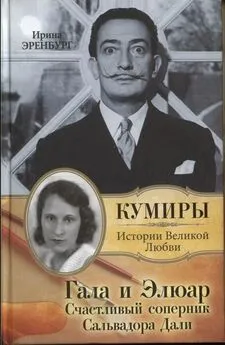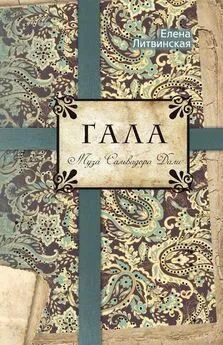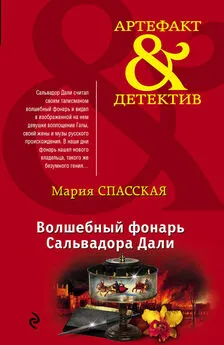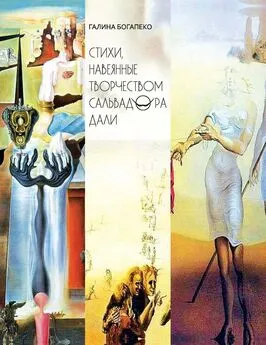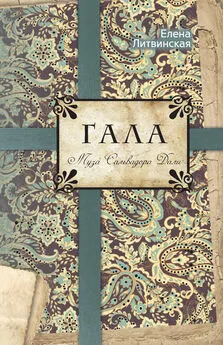Западноевропейское искусство от Хогарта до Сальвадора Дали
- Название:Западноевропейское искусство от Хогарта до Сальвадора Дали
- Автор:
- Жанр:
- Издательство:неизвестно
- Год:неизвестен
- ISBN:нет данных
- Рейтинг:
- Избранное:Добавить в избранное
-
Отзывы:
-
Ваша оценка:
Западноевропейское искусство от Хогарта до Сальвадора Дали краткое содержание
«Московский Лицей»
пособие для изучающих английский язык
издание второе переработанное и дополненное
Москва – 1999
Рецензенты:
Е. Б. Яковлева, доктор филологических наук, профессор
И. В. Шевлягина, кандидат филологических наук, доцент
РЕКОМЕНДОВАНО кафедрой иностранных языков исторического факультета МГУ им. М. В. Ломоносова
Тексты настоящего пособия охватывают почти три века истории западноевропейского искусства от Хогарта до Сальвадора Дали. Это позволяет обучаемым наряду с усвоением обширного лексического материала, приобрести культурологические знания, поскольку тексты содержат информацию о жизни и творчестве крупнейших западно-европейских художников XVIII – XX вв. Система упражнений направлена на усвоение лексического материала и развитие навыков устной речи.
Данная книга является второй частью цикла учебных пособий «Западноевропейское искусство (для изучающих английский язык)». В первую книгу вошли тексты, охватывающие пять веков западноевропейской живописи oт Джотто до Рембрандта. Данное пособие предназначено для студентов-искусствоведов, учащихся классических гимназий, лицеистов и всех изучающих английский язык и интересующихся западноевропейским искусством.
© Миньяр-Белоручева А. П.
© Оформление «Московский Лицей». 1999
ISBN 5-7611-0182-3
___DdeLink__6_1602129716 Издательство Адрес: Телефон
акс
Тираж 5000 экз.
Западноевропейское искусство от Хогарта до Сальвадора Дали - читать онлайн бесплатно полную версию (весь текст целиком)
Интервал:
Закладка:
VI. Summarize the text.
VII. Topics for discussion.
1. Reynolds's portraits.
2. Reynolds's Enlightenment activity.
Unit IV Ingres (1780-1867)
Jean-Auguste-Dominique Ingres remained faithful to Neo-classic ideals to the end of his life, he formed the centre of the conservative group that utilised the Principles of Neo-classicism, forged in the Revolution (1789-1799) as a weapon for reaction. Ingres was an infant prodigy, attending art school at eleven, and a capable performer on the violin. He entered the studio of David at seventeen, but as long as he lived he never accepted the cubic mass of David's mature style preferring curving forms flowing like violin melody. Winner of the Grand Prix de Rome , he remained in that city from 1806 until 1820, and returned there from 1835 to 1841, absorbing not only ancient but also Renaissance art, especially that of Raphael. Ingres stayed four years in Florence (1820-24) where he was one of the first to appreciate the Florentine Mannerists. The first pictures he exhibited at the Salon were almost uniformly ridiculed, accused of being everything from Gothic to Chinese, and his special non-political Neo-classicism was worked out in isolation.
In 1808 Ingres did one of his finest paintings, whose pose he revived again and again in later works, the Valpincon Bather , named after the collection it first adorned. This lovely nude is drawn with a subtle contour line delicately flowing over shoulders, back and legs. The surface is modelled to porcelain smoothness, but is never hard; Ingres was always at his best with delicate flesh and soft fabrics.
Ingres fancied himself a history painter, although his narrative pictures are weakened by his inability to project a dramatic situation. A work that embodies his ideal programme of Neo-classicism is the huge Apotheosis of Homer , painted in 1827 and intended for the ceiling of a room of the Louvre. Ingres made no concessions to the principles of illusionistic ceiling perspective from below. He preferred the High Renaissance tradition, as exemplified by Michelangelo. Before an Ionic temple dedicated to Homer, the blind poet is enthroned, crowned with laurel by the muse of epic poetry. Below him sit two women figures, the one with a sword, representing the Iliad , another with a rudder the Odyssey . The geniuses from antiquity and later times whom Ingres considered truly Classical are grouped around. At the lower right are grouped three French Classical writers. Shakespeare and Corneille make the scene in the lower left-hand corner. The cool light of an ideal realm binds the figures together in the kind of artificial composition that became definitive for muralists even into the twentieth century.
Ingres was financially obliged to accept portrait commissions, which he considered a waste of time, although today his portraits are accepted as his greatest works. He even drew portraits of visitors to Rome, who trooped to his studio. Such pencil studies as the Stamaty Family of 1818, show the exquisite quality of his line.
Ingres's paintings are perfect in colour. All the beauty of his colour and the perfection of his form are seen in the portrait of Comtesse d'Houssonville , painted in 1845. She is posed in a corner of her salon, in an attitude clearly derived from Classical art. No Dutch painter ever produced still lifes more convincing than the vases on the mantle. The reflection in the mirror, going back through Velazquez to van Eyck, reappears again and again in the nineteenth-century art, deeply concerned as it was with the optical phenomena.
Although many of his subjects are drawn from the medieval history and poetry, dear to the Romanticists, Ingres was resolutely opposed to their abandonment to emotion and to the artistic sources on which they drew. Yet, the influence of Ingres later in the nineteenth century was very great.
Make sure you know how to pronounce the foallowing words:
Dominique Ingres; Athens; Salon; Delacroix; Velazquez; Odyssey; Iliad; Eyck; genius; Romanticists; Louvre; exquisite; Shakespeare; Corneille; Renaissance; prodigy; apotheosis; Gothic; laurel; Chinese; phenomena; violin; perspective
Vcdpinqon Bather – «Купальщица Вальпинсон»
Apotheosis of Homer – «Апофеоз Гомеру»
Stamaty Family – «Семья Стамати»
Comtesse d'Houssonville – «Портрет графини Луизы д'Oссонвиль»
Iliad – 'Илиада»
Odyssey – «Одиссея»
rudder – руль
I. Read the text. Make sure you understand it. Mark the following statements true or false.
1. Ingres remained faithful to Romantic ideals to the end of his life.
2. Ingres was a talented pianist.
3. The Grand Prix de Rome was won by Ingres.
4. Ingres fancied himself a mythological painter.
5. Ingres was fond of portrait painting.
6. Ingres drew subjects from contemporary poetry.
II. How well have you read? Can you answer the following questions?
1. What did Ingres form? Did Ingres accept the cubic mass of David's mature style? What forms did Ingres prefer?
2. What did Ingres study in Italy? How did the public accept Ingres's first paintings? What are the drawbacks of Ingres's narrative pictures? What is one of Ingres's finest paintings?
3. What work embodies the ideal programme of Neo-classicism? Did Ingres make any concessions to the principles of illusionistic ceiling perspective from below? What tradition did Ingres prefer?
4. What is represented in the Apotheosis of Homer ? How did Ingres arrange the figures? What binds the figures together? How are the Iliad and the Odyssey depicted?
5. What makes the portrait of Comtesse d'Houssonville world-known?
6. What was Ingres's attitude to other painters? What impact did Ingres make on other painters?
III. i. Give Russian equivalents of the following phrases:
to utilise the principles of Neo-classicism; an infant prodigy; to prefer curving form; a history painter; narrative pictures; an Ionic temple; to be crowned with laurel; the muse of epic poetry; geniuses from antiquity and later times; an artificial composition; muralists; pencil studies; perfect in colour; the perfection of the form; the artistic sources; to derive from Classical art; subjects drawn from medieval history; to bind the figures together; an ideal realm; a subtle contour line; an exquisite quality of the line; optical phenomena.
iii. Give English equivalents of the following phrases:
муза эпической поэзии; принципы неоклассицизма; вундеркинд; связать фигуры воедино; предпочитать изогнутые линии; тематические картины; ионический храм; увенчать лавровым венком; гении античности и более поздних времен; идеальное царство; искусственная композиция; заимствовать из классического искусства; изысканность линии; карандашные наброски; совершенные по цвету работы; изящество линии; творческий источник; слегка намеченный контур; совершенство формы; сюжеты из средневековой истории.
iii. Make up sentences of your own with the given phrases.
iv. Arrange the following in the pairs of synonyms:
a) artificial; artistic; perfection; to derive; reflection; phe nomenon; subject; abandonment; laurel; brand;
b) excellence; to obtain; wreath; creative; image; cession; mark of ownership; event; theme; unnatural.
IV. Here are descriptions of some of Ingres's works of art. Match them up to the titles given below.
1. She is posed in a comer of her salon.
2. The surface is modelled to porcelain smoothness.
3. The cool light of an ideal realm binds the figures together in the kind of artificial composition.
a) Apotheosis of Homer
b) Comtesse d'Houssonville
c) Valpinson Bather
V. Translate the text into English.
Жан Огюст Доменик Энгр, превративший давидовский классицизм в академическое искусство и вступивший в противоборство с романтиками, в семнадцатилетнем возрасте приехал в Париж в ателье Давида. Усвоив классическую систему с ее культом античного классицизма, Энгр отказался от революционности стиля своего учителя и стремился уйти от реальной жизни в мир идеального.
В картинах 1810-х годов, оставаясь преданным античным темам, Энгр обращался и к сюжетам из средневековья. Основным произведением художника в это время стал алтарный образ для церкви города Монтобана. Энгр решил образ мадонны близким к Сикстинской мадонне. Эта работа принесла художнику успех в Салоне в 1824 году. Однако некоторые произведения Энгра, такие как «Портрет художника Франсуа Мариуса Гране» и «Купальщица Вальпинсон», предвещают новое мироощущение романтиков.
Последние годы жизни Энгра были омрачены битвами сначала с романтиками во главе с Делакруа, затем с реалистами, которых возглавлял Курбе.
VI. Summarize the text.
VII. Topics for discussion.
1. The principles of Ingres's painting.
2. Ingres's style and characters.
Unit V Goya (1776-1828)
The greatest artistic genius of the turn of the eighteenth century was a Spaniard, Francisco Jose de Goya у Lucientes. He made a trip to Italy and was not impressed either by antiquity or by the Renaissance. Goya was a lifelong rebel against artistic or intellectual straitjackets. He managed to skip the Neo-classical phase entirely and passed directly from a personal version of the Rococo to Romantic stage.
In 1786 Goya was appointed painter to the king and in 1799 he became the first court painter. After 1792 Goya was totally deaf, and it liberated him from some of the trivialities of life for meditation on its deeper significance. Goya's brilliant portraits of the royal court may have been influenced by Gainsborough. But his characterisations are far more vivid, human and satiric. Goya's supreme achievement in portraiture is the Family of Charles IV , painted in 1800, an inspired parody of Velazquez's Las Meninas . Thirteen members of the royal family, representing three generations, are assembled in a picture gallery of the palace, with Goya himself painting a large canvas in the shadows at the left. The king, with his red face and with his chest blazing with decorations, and the ugly ill-natured queen are painted as they were. Alfonce Daudet called them «the baker's family who have just won the big lottery prize». Goya's purpose is deeper than satire: he has unmasked these people as evil. Only some of the children escape his condemnation.
Читать дальшеИнтервал:
Закладка:
